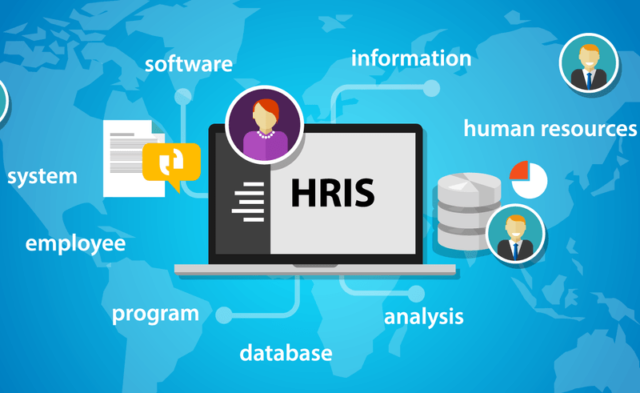In the dynamic landscape of HRM Practices in Bangladesh Garments has emerged as a prominent hub. Contributing significantly to the country’s economic growth.
Central to the success of this thriving sector is the Human Resource Management (HRM) practices. Adopted by the various garment enterprises.
The amalgamation of a rapidly evolving industry and a labor-intensive market necessitates a comprehensive approach to managing human resources.
There is no doubt that the best tool that can rotate an organization’s wheel is human capital.
Human Resource Management (HRM) is a branch of a company. That takes charge of the recruiting, retention, and termination of employees.
HRM reflects on the role of employees in the organization, ensuring that best practices are still in place.
But, how effective is the Garments HR Payroll Software?
A single large like the garments sector or a moderately-sized organization has to have a department for human resources management.
If more personnel are required, the HRM will look for new sufficient candidates.
The HRM also oversees the termination process of unnecessary workers if the organization team has to decrease.
Human Resource Management is also responsible for holidays, sickness, and grief. As well as other issues of the day-to-day staff without the intervention of senior managers.
This article delves into the intricacies of HRM practices in the Bangladesh garments sector. Shedding light on how these practices are not only crucial for enhancing operational efficiency. But also for ensuring compliance with ethical and legal standards.
By examining the various dimensions of HRM. From recruitment and training to employee well-being and workplace compliance. We aim to unravel the strategies that underpin the success of Bangladesh’s garments sector on the global stage.
Status quo: HRM Practices in Bangladesh Garments Sector
To achieve success in human resources administration, companies have adopted information technologies.
The study showed that human resource information systems appeared in the low-cost (1980-90) timeframe.
During the high-tech era (from 1990 onwards), the positions of Human resource practitioners changed. From conventional managerial tasks to more strategic roles.
In the year 2000, this concept began to be implemented in staff management in Bangladesh. We have developed awareness and experience in the Human Resource Information System method over time.
Now, one of the standard software practices in the garment sector of Bangladesh that is used for human resource management is typically known as HRIS or HRMS.
HRIS means the human resource information system. Whereas HRMS means the human resource management system. Both mean essentially the same but the terms are used interchangeably.
In Bangladesh, we assume that the HRIS is only for managing attendance. Switching to payroll generation via a computer-installed software program.
Nevertheless, quite a range of firms in the garment sector use Microsoft Excel to plan payrolls and benefits.
Few are expressing their enthusiasm for Enterprise Resource Planning (ERP) solutions and practices. Where human resource management is incorporated with core functional modules. Such as planning, manufacturing, supply chain, distribution, business, accounting, and so on.
An HRIS should usually be capable of making the schedule, tracking, and handling HR expenses more efficiently.
Some of the functions are as follows-
- Price and Budget Plan
- Administration of Recruiting
- Training and Monitoring of skills for workers
- Regulation of performance-based appraisal
- Management of shift, leave, and attendance
- Regulation of payments and benefits
- Intelligence and Data Strategy
- Control and history of compliance
- Control of personnel properties
What are the HRM practices in RMG industry in Bangladesh?
In the Bangladesh industry, Garments HR Payroll Software is essential. For managing and optimizing the workforce to ensure efficient operations and a positive working environment.
Some of the key HR activities in the garments industry include:
Recruitment and Selection:
- Identifying job vacancies and creating job descriptions.
- Advertising job openings through various channels.
- Screening and shortlisting candidates.
- Conducting interviews and assessments.
- Selecting and hiring suitable candidates.
Onboarding and Orientation:
- Introducing new employees to the organization’s culture, policies, and procedures.
- Providing an overview of their roles and responsibilities.
- Conducting orientation programs to familiarize new hires with the workplace and colleagues.
Training and Development:
- Identifying training needs and skill gaps.
- Designing and delivering training programs related to garment production, safety, quality control, and more.
- Continuous skill development to enhance employee performance and productivity.
Performance Management:
- Setting performance goals and expectations.
- Regularly assessing employee performance through evaluations and appraisals.
- Providing feedback, recognition, and constructive criticism.
- Identifying opportunities for improvement and career growth.
Compensation and Benefits:
- Designing and managing competitive salary structures.
- Administering employee benefits such as health insurance, bonuses, and incentives.
- Ensuring compliance with labor laws and regulations related to wages and benefits.
Employee Relations:
- Addressing employee concerns, grievances, and conflicts.
- Promoting a positive work environment and resolving issues promptly.
- Fostering effective communication between management and employees.
Health and Safety:
- Ensuring a safe and healthy work environment for all employees.
- Implementing safety protocols and training to prevent accidents and injuries.
- Compliance with occupational health and safety regulations.
Labour Compliance:
- Ensuring adherence to labor laws and regulations related to working hours, overtime, leave policies, etc.
- Maintaining accurate records of employee attendance, working hours, and leave.
HR Policies in Garment Industry
HR policies in the garment industry are a set of guidelines and rules. That outlines the standards and expectations for employee behavior, rights, and responsibilities within the context of the industry.
These HRM Practices in Bangladesh Garments help create a structured and consistent work environment. Ensure compliance with labor laws and regulations, and promote a positive workplace culture.
While specific policies can vary from company to company. Here are some common HR policies in garment industry:
Code of Conduct and Ethics:
- Defines expected behavior and ethical standards for all employees.
- Addresses issues like honesty, integrity, confidentiality, and conflict of interest.
Anti-Discrimination and Harassment:
- Prohibits discrimination and harassment based on factors such as gender, race, religion, and more.
- Provides a process for reporting and addressing such incidents.
Equal Opportunity Employment:
- Ensures that all employees have equal access to job opportunities, regardless of background or characteristics.
Working Hours and Overtime:
- Specifies working hours, break times, and policies related to overtime work.
- Complies with labor laws to prevent exploitation of workers.
Leave and Absence:
- Describes different types of leaves, such as sick leave, vacation, maternity/paternity leave, and bereavement leave.
- Explains the procedures for requesting and approving leaves.
Whistleblower and Reporting:
- Provides a mechanism for employees to report unethical behavior, safety concerns, or other violations without fear of retaliation.
IT and Data Security:
- Explains the proper use of company information systems and data security practices.
- Emphasizes the importance of protecting sensitive information.
Drug and Alcohol Policy:
- Outlines rules related to substance abuse in the workplace, including testing procedures and consequences.
Dress Code and Personal Appearance:
- Defines appropriate attire and grooming standards for the workplace, considering safety and professionalism.
Termination and Resignation:
- Describes the process and procedures for resignations, layoffs, and involuntary terminations.
Companies in the garment industry need to tailor their HR policies to their specific operational needs. While also ensuring compliance with local labor laws and regulations.
Clear communication of these policies to employees and consistent enforcement contribute to a productive and respectful work environment. And here Garments ERP Software in Bangladesh helps a lot.
Which specific challenges does garments industries face in Bangladesh?
The critical reasons for the shift of HR norms in various industries of the garments sector. They are to reduce cost burdens while drawing international customers. Improving the organization’s market image and workforce retention. Preserving green environments and checking conformity with the policies.
The four leading HR roles under which are considered. Include career training, work motivation, recruiting, and maintenance services.
Some other sub-functions include employment growth, workplace protection, fair pay, evaluations, multiple leave plans, working climate, health and welfare concerns, transport services, and operating hours.
A significant proportion of the workers in the garments sector are not pleased with their present jobs. The salaries they get cause extraordinary discontent among the staff of the garment. The garment factory owner also refutes his right to improve working conditions or salaries. It has become a mindset problem as well. Regardless, it is now a matter of fact that Software for Garments in Bangladesh needs to be implemented very critically.
Why is HRM Important to be implemented in the garment sector?
Hrm Practices in Bangladesh Garments are immensely and undoubtedly essential. That’s solely for the growth and economy of a country. As we have discussed here, I mentioned HRMS or HRIS software from Jibika Plexus.
It is a valuable source of information for a single database. It allows employee planning to explain behavior patterns and assess satisfaction and efficiency.
Remote access to activities, roles, and knowledge is accessible on a cloud-based basis. It also provides advanced resources to improve employee engagement, skills development, and contact with staff. So, regardless of the current scenario of the garments sector, it is imperative for the proper use of these software tools.
Software for Garments in Bangladesh for E-HRM Practices
In recent years, the garment industry in Bangladesh has experienced remarkable growth. Positioning itself as a key player in the global apparel market.
As the sector continues to expand, the integration of technology has become a critical factor. In streamlining operations, optimizing efficiency, and maintaining international standards through HRMS HRIS Bangladesh.
This is where specialized Software for Garments in Bangladesh steps in. Revolutionizing the way businesses in Bangladesh manage their production, supply chain, and overall operations.
Here’s an overview of the key Garments Software in Bangladesh.
1. Enterprise Resource Planning (ERP) Software:
- Centralized platform for managing various business processes.
- Integrates departments like finance, inventory, production, sales, and HR.
- Facilitates real-time data sharing and collaboration.
- Provides insights through analytics and reporting modules.
2. Attendance Software:
- Tracks employee attendance, leaves, and work hours.
- Provides real-time insights into workforce availability.
- Simplifies attendance management and reduces paperwork.
- Facilitates accurate payroll calculations.
3. Human Resource Information System (HRIS) Software:
- Centralized database for managing employee information.
- Streamlines recruitment, onboarding, and employee records.
- Facilitates performance management, training, and career development.
- Enhances HR processes and supports data-driven decisions.
4. Accounting Software:
- Manages financial transactions, invoicing, and expense tracking.
- Automates bookkeeping tasks and reduces manual data entry.
- Generates financial reports, balance sheets, and profit/loss statements.
- Ensures accurate financial records and supports compliance with tax regulations.
5. Payroll Software:
- Manages employee compensation, deductions, and tax calculations.
- Automates payroll processing and reduces manual errors.
- Ensures accurate and timely salary payments.
- Generates payroll reports for record-keeping and compliance.
6. Product Lifecycle Management (PLM) Software:
- Manages product development from concept to production.
- Tracks design, prototyping, sourcing, and production phases.
- Enhances collaboration among design, production, and supply chain teams.
- Improves time-to-market and product quality.
7. Supply Chain Management Software:
- Monitors and manages the flow of materials from suppliers to production.
- Optimizes inventory levels and reduces supply chain disruptions.
- Enables demand forecasting and order tracking.
- Enhances coordination between suppliers and manufacturers.
8. Production Planning and Scheduling Software:
- Generates optimized production schedules based on capacity and demand.
- Balances workloads, minimizes bottlenecks and reduces downtime.
- Facilitates efficient resource allocation, including machines and labor.
9. Quality Management Software:
- Automates quality checks and inspections during production.
- Tracks defects, deviations, and corrective actions.
- Ensures products meet quality standards before reaching customers.
- Reduces rework, recalls, and customer complaints.
10. Inventory Management Software:
- Tracks inventory levels in real-time.
- Sets reorder points and manages stock replenishment.
- Reduces excess inventory costs and prevents stockouts.
- Provides insights into inventory turnover and trends.
11. Communication and Collaboration Software:
- Facilitates internal and external communication.
- Enables real-time collaboration among departments and teams.
- Centralizes document sharing, discussions, and decision-making.
- Improves coordination and reduces miscommunication.
12. Compliance Management Software:
- Tracks and ensures compliance with labor, safety, and environmental regulations.
- Monitors adherence to ethical and social standards.
- Generates reports for audits and regulatory authorities.
- Enhances the company’s reputation and ethical standing.
13. Data Analytics and Reporting Software:
- Collects and analyzes data from various stages of the production process.
- Generates insights into operational performance and trends.
- Helps in making informed decisions for process optimization.
- Presents data through visual dashboards and customizable reports.
In the ever-evolving garment industry of Bangladesh, this comprehensive suite of software solutions plays a pivotal role in enhancing operational efficiency. Ensuring product quality. Optimizing resource allocation and maintaining compliance with regulatory standards. And ultimately contributing to the industry’s continued growth and success.
How do these Garments HR Payroll Software solutions work?
Understanding the Inner Workings of HRM System in Bangladesh Garments:
Garments Manufacturing Software tailored for the garment industry in Bangladesh. They are designed to address the unique challenges and requirements of this dynamic sector.
These solutions encompass a range of functionalities. That collectively contributes to improving efficiency, accuracy, and overall management. Here’s a closer look at how these software solutions work:
Supply Chain Management:
Garment software solutions often include modules for managing the intricate supply chain.
They enable businesses to track and manage raw materials. Monitor inventory levels and facilitate seamless communication with suppliers.
Real-time updates and alerts ensure that production processes are synchronized with the availability of materials. Minimizing delays and optimizing resource allocation.
Production Planning:
These solutions assist in creating production plans that balance capacity, demand, and resources. Algorithms consider factors like order volume, lead times, machine availability, and workforce skills.
They help to generate optimized production schedules. This minimizes production bottlenecks, reduces idle time, and enhances overall operational efficiency.
Quality Assurance:
Quality control is paramount in the garment industry.
Software solutions facilitate quality checks at various stages of production. Allowing for real-time monitoring and rapid detection of defects.
This ensures that products meet the desired standards before reaching customers. Reducing the chances of recalls and rework.
Inventory Management:
Efficient inventory management is critical to preventing overstocking or stockouts.
Software solutions offer features like automatic reorder points, batch tracking, and real-time stock visibility.
This prevents excess inventory costs while ensuring products are readily available to meet customer demand.
Communication and Collaboration:
These solutions often incorporate communication tools. That facilitates collaboration among different departments, suppliers, and stakeholders.
Centralized data sharing and communication platforms streamline decision-making processes, reducing miscommunication and enhancing coordination.
Data Analytics:
Modern software solutions gather vast amounts of data from various stages of the production process. Advanced analytics tools process this data to generate insights into production trends. Demand patterns and operational bottlenecks. These insights enable informed decision-making for process optimization.
Compliance Tracking:
The garment industry is subject to numerous regulations and ethical standards.
Software solutions help businesses monitor compliance with labor laws, safety regulations, and environmental standards.
This ensures that operations align with international requirements, enhancing the industry’s reputation.
Reporting and Dashboards:
User-friendly dashboards and reporting features provide a comprehensive view of key performance indicators (KPIs) and operational metrics.
This empowers managers to make informed decisions, identify areas for improvement, and track progress over time.
Garments Manufacturing Software in Bangladesh works by integrating and automating various aspects of production, supply chain, quality control, and communication.
By digitizing and optimizing these processes, these solutions contribute to higher efficiency. Reduced costs, improved product quality, and overall competitiveness in the global market.
Importance of HRM Software Practices in Bangladesh Garments
The Garments Software Industry in Bangladesh has emerged as a pivotal force. Driving the country’s renowned garment sector into a new realm of efficiency, transparency, and global competitiveness.
As a cornerstone of the nation’s economy, the garment industry contributes significantly to export earnings and employment generation.
The integration of Software for Garments in Bangladesh is tailored to the unique needs of the sector. It has ushered in a transformative era that underscores several key aspects of importance:
Workforce Management Precision:
The garment industry’s vast and diverse workforce demands efficient management. HRM Software Practices in Garments Industry of Bangladesh streamline essential functions. Such as attendance tracking, payroll management, and employee records.
This accuracy reduces errors, minimizes administrative burden, and ensures fair compensation, fostering a motivated and contented workforce.
Tackling High Turnover Rates:
The sector’s high turnover rates pose a challenge.
HRM software enables companies to understand the factors influencing turnover, providing insights to improve retention strategies.
By addressing employee concerns, fostering professional growth, and enhancing workplace satisfaction, Software for Garments Manufacturing contributes to reducing turnover.
Performance Assessment and Improvement:
HRM software facilitates systematic performance evaluation, enabling managers to assess employee productivity, skills, and contribution.
These insights guide targeted training and development programs, aligning individual growth with organizational objectives.
Ethical Labor Practices and Compliance:
Bangladesh’s garment industry has faced scrutiny regarding labor conditions. HRM software helps ensure adherence to labor laws, health, and safety regulations. Promoting ethical practices and safeguarding worker well-being.
Data-Driven Decision-Making:
HRM software generates valuable data related to workforce demographics, performance trends, and resource allocation.
Analyzing this data enables informed decision-making, aiding in resource optimization and strategic planning.
Streamlining Recruitment:
The industry’s rapid growth necessitates efficient recruitment processes.
HRM software automates candidate sourcing, application tracking, and interview scheduling, expediting the hiring process and ensuring access to a qualified talent pool.
Cultivating a Learning Culture:
HRM software supports the development of a learning culture by offering accessible training modules and resources.
This encourages employees to acquire new skills, fostering a culture of continuous learning and adaptability.
Strategic Resource Allocation:
By automating routine administrative tasks, HRM software allows HR professionals to focus on strategic initiatives.
This includes workforce planning, talent development, and implementing policies that align with the company’s long-term goals.
Frequently Asked Questions for HR Policies in Garment Industry
In the garment industry, navigating HRM practices in Bangladesh necessitates a deep understanding of HR policies. HR professionals in Bangladesh employ a range of strategies to manage the HRM system in Bangladesh dynamics efficiently and ethically. Let’s delve into commonly asked questions surrounding HR policies, shedding light on the practices and systems.
What are practices in HRM?
Ans: HRM practices in Bangladesh encompass a wide range of strategies and activities. All are aimed at effectively managing an organization’s workforce. These practices are essential for attracting, retaining, and developing talent. As well as creating a positive work environment conducive to employee productivity and satisfaction through Free HRM Software download.
What are the four HRM practices?
Ans: The four primary HRM practices are recruitment and selection, training and development, performance management, and compensation and benefits. These practices are essential for attracting, retaining, and developing talent within an organization.
What are the challenges of HRM in Bangladesh?
Ans: Challenges of HRM in Bangladesh include managing a large and diverse workforce. It ensures compliance with labor laws and regulations, addressing issues related to employee safety and welfare, and coping with rapid changes in the business environment with HRM attire.
What is the business situation in Bangladesh for garments?
Ans: Bangladesh stands as a prominent player in the global garment industry. Boasting a robust presence among the top 10 garments in Bangladesh. Renowned for its extensive manufacturing of apparel, this sector plays a pivotal role in bolstering the nation’s economy.
It serves as a cornerstone, generating employment for millions and fueling substantial export revenues. Delving into the intricacies of HRM in the garment industry is pivotal, underscoring its significance as outlined in relevant Human Resource Management in garment industry pdf resources.
What are the roles of the HR department in garment industry?
Ans: The role of human resources for clothing business is essential. The HR department plays a pivotal role in smooth operations. From recruitment and training of workers to ensuring compliance with labor regulations, managing employee relations, and handling grievances, HR professionals are integral.
They implement safety measures and champion employee welfare and engagement, leveraging HRMS HRIS Bangladesh solutions tailored to specific needs.
What are HRM Practices in Bangladesh Garments?
Ans: HRM practices in Bangladesh garment industry are many. It includes fair recruitment processes, providing training and skill development opportunities for workers. All of these ensures workplace safety and compliance with labor laws, implementing performance evaluation systems, and offering competitive compensation and benefits packages.
What is the present state of HR practice in Bangladesh?
Ans: The present state of HR practice in Bangladesh involves a shift towards more strategic HR management approaches. Focusing on talent management, employee engagement, and organizational development. However, challenges such as labor unrest and compliance issues persist, requiring continuous improvement in HR practices.
How does Payroll Software for sweater factory in Bangladesh work?
Ans: Payroll software for sweater factory in Bangladesh automates the calculation and processing of employee salaries, deductions, and taxes. It typically integrates with attendance tracking systems to accurately calculate wages based on attendance records. Additionally, it generates payslips, maintains payroll records, and ensures compliance with tax regulations and labor laws specific to the garment industry in Bangladesh.
Conclusion
Organizations rely heavily on technical advancements in digital technologies in the economic sphere of transformation and globalization.
The world of Human Resource Management has constantly evolved. HR Software in Bangladesh is playing a strategic role in today’s situation rather than just a support mechanism.
Advances in software company in Bangladesh have opened up new doors for different sectors. Like garments and have given HRM custom solutions a strategic edge.
The management method has been an essential part of this and all organizations should depend on centralized data structure, storage, compilation, and evaluation processes.
A human resource manager cannot play a successful strategic role without HRIS.
In a nutshell, HRM Practices in Bangladesh Garments is very vital. An area to explore further to ensure the proper growth reputation of the RMG sector.








